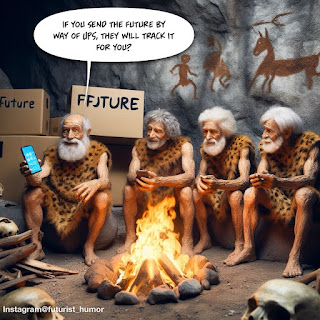 |
| The Benedicts |
Mobile technologies are having a massive impact on our economy, society and culture. Much is written both here and in many other places about these impacts and changes. In this article, however, I am going to share some personal ways mobile technologies are having a significant impact on our family.
I publish articles, videos and newsletters daily about mobile and SMAC technologies and trends. I can continue writing and publishing uninterrupted no matter my location in the world as long as there is Internet connectivity. This was not possible even a decade ago. I am still amazed by it. Today, I can and do publish content from airplanes via WiFi!
Our son graduated last year from
Boise State University and went immediately into training and schooling in preparation to serve as a military officer. While going through training his class had a social media team that would post updated pictures of their training and exercises to Facebook nearly every day. This simple act, was incredibly important to us and his friends. We experienced his life, in a small way, through near real-time pictures and social media. Every day we would search the faces of sweating soldiers for our son and study the photos intently to understand what he was doing and experiencing.
On most weekends, we were able to catch up briefly with our son via his iPhone. Sometimes for only two or three minutes, but those minutes were precious and highly anticipated.
As his graduation neared, we visited the Facebook page of his organization to learn the details of graduation, schedules, how to dress, where to stay, rules and advice. It was extremely helpful!
Now as an officer, with a more regular schedule, he can communicate with us and his friends regularly through texts, emails, Facetime and even voice! He can easily pay his bills, complete his banking and conduct business in Boise, Idaho while he is located elsewhere. Nearly all of his finances can be managed via his iPhone.
The distance that separates us is minimized by mobile communications and social media. In fact, last week he uploaded a photo of some materials in Boise that he wanted to sell and posted it on Craig's List. He is not currently located in Boise, but that is not a limitation these days. I love it!
A few months ago our daughter graduated from high school. This summer, as she was preparing to enter the university, her freshman class developed a Facebook page and everyone starting introducing themselves, their class schedules and their dormitories. She quickly met her classmates, her roommate, and started developing relationships and preparing according to the advice others were sharing online. We, as parents, will still feel the pain of separation, but also be comforted by the ability to communicate and witness our daughter's experiences via social media and mobile technologies.
Here is another example of how digital and mobile technologies are enhancing our lives. This week my lovely wife asked her online community about problems with our dishwashing machine. She received over a dozen responses full of great advice and recommendations within hours. Some of the advice actually worked! Problem solved at no cost!
In another example, a small group of us are very active in helping refugee families integrate and adjust to Boise upon their arrival from overseas. It takes a surprising amount of organization, planning, scheduling and coordination to help new refugees. They have a massive amount of paper work, appointments and meetings to attend. They have language classes, schools, medical appointments and case managers to communicate with. They are all on a timeline with pressure to get integrated, working and sufficient ASAP.
 |
Integrating our refugee friends
into Boise (State) society |
When we started working with refugees, we quickly realized that outfitting the refugees with mobile phones was an absolute priority. It was critical to be able to find people, ask and answer questions, respond to emergencies and arrange transportation to various appointments. This became quickly apparent after searching the streets of Boise many times over several days for various families and family members that had missed appointments and transportation arrangements, and experiencing deaths and births among the refugee community.
Today, the refugee families we work with are all organized and outfitted with mobile technologies. Many of the families are now also communicating via SKYPE and Google+ with family members in their home countries preparing them for the journey to Boise. Mobile and online technologies enable families to maintain and foster relationships with friends and relatives separated by thousands of miles.
I am not one of those people to pine about days gone by. I love mobile and social media technologies! It can and will be abused, but that cannot diminish the benefits and delights these technologies bring to the lives of my family and millions of others.
*************************************************************
Kevin Benedict,
Head Analyst for Social, Mobile, Analytics and Cloud (SMAC)
Cognizant
View Linkedin Profile
Follow me on Twitter @krbenedict
***Full Disclosure: These are my personal opinions. No company is silly enough to claim them. I am a mobility and SMAC analyst, consultant and writer. I work with and have worked with many of the companies mentioned in my articles.















.jpg)








